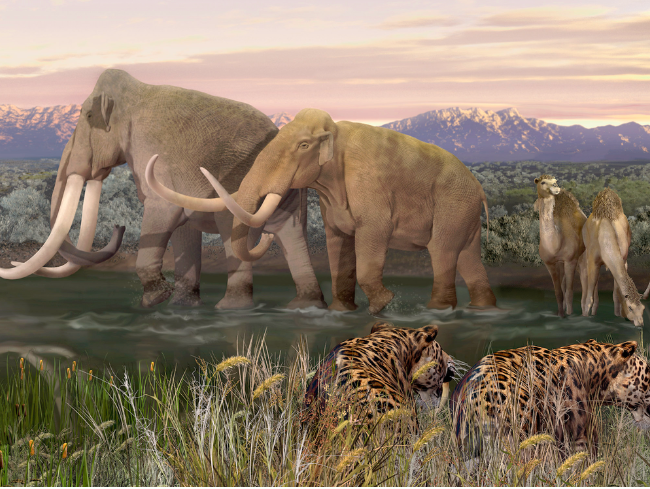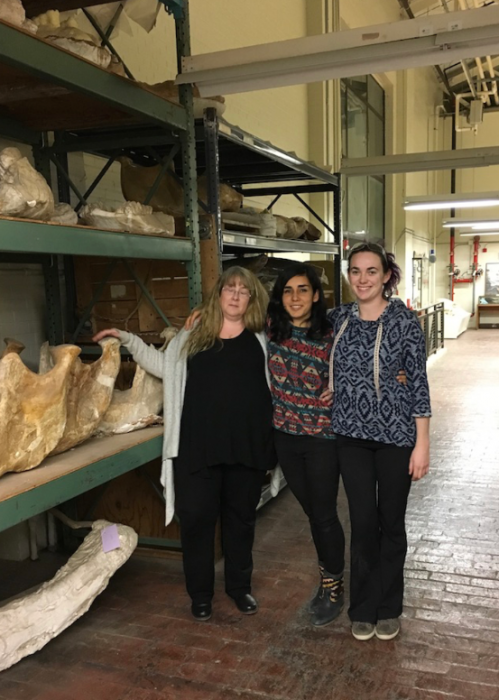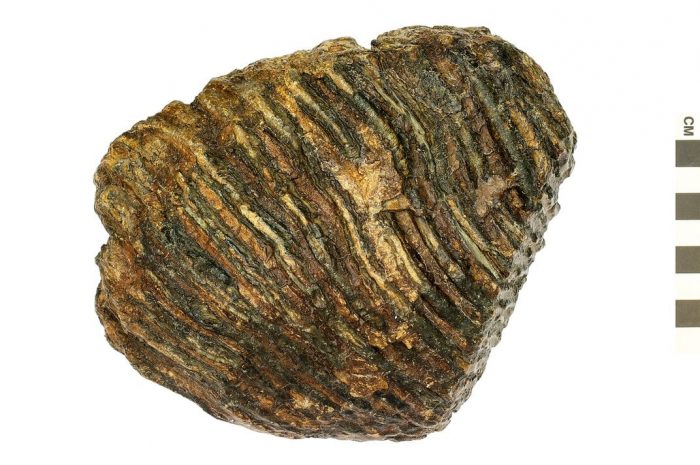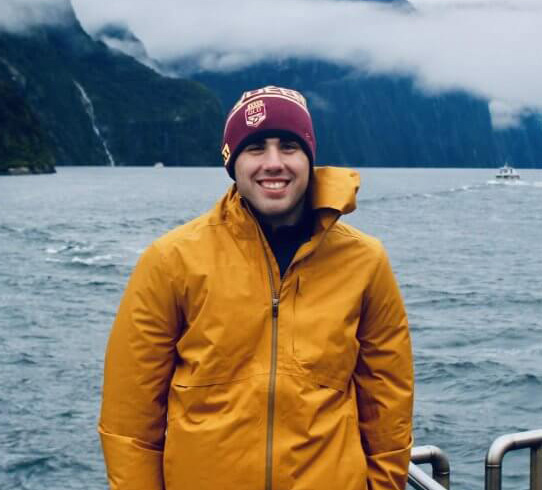What the Demise of Mammoths Can Teach Us About Future Extinctions
Smithsonian scientist’s research illustrates how North American ecosystems are still reeling from the megafaunal extinction that closed the ice ages.

The loss of any animal is an ecological travesty. No species exists in a vacuum and removing a single creature from an environment can send ripples through an entire ecosystem. But certain species leave particularly large ecological shoes to fill—especially when that animal is a 14-foot-tall mammoth.
At the end of the Pleistocene Epoch around 11,700 years ago, mammoths and many other ice age icons called megafauna went extinct for reasons that remain murky. Whether it was the arrival of humans to North America around 13,000 years ago, warming climates or (most likely) a combination of both, the magnitude of the extinction is impossible to ignore. When the dust had settled, over 65 species of large mammals had disappeared from North America.
The mass exodus of these giants left massive gaps in ecosystems that have yet to rebound to their Pleistocene heydays. To make sense of just how drastic this ecological upheaval really was, paleontologists are utilizing fossils from both before and after this extinction, which may help them make sense of future extinction events. One researcher helping to flesh out the aftermath of this extinction is Emma Elliott Smith, a Peter Buck postdoctoral research fellow in the National Museum of Natural History’s anthropology department. While a marine ecologist and biogeochemist by trade, Elliott Smith could not turn down the opportunity to analyze the bones of ice age beasts when her colleagues at the University of New Mexico, paleoecologists Felisa Smith and Seth Newsome, began the project. “Who doesn’t want to study mammoths and mastodons and sabertooth cats?” she says.

The researchers were focused on reconstructing the diets of megafauna in the leadup to extinction and what the smaller survivors ate afterwards. Figuring out who ate what would be crucial for reconstructing the ecosystems that bookended extinction. But they needed a lot of bones. So they headed to the Texas Memorial Museum in Austin, the home of a massive cache of Pleistocene fossils discovered from caves in central Texas. During the ice age, this region was covered by grassy savannas instead of ice and home to a menagerie of megafauna, including elephant-like mammoths and mastodons, bulky bison, towering camels and stocky ground sloths. Stalking this giant game were similarly supersized predators like sabertooth cats and dire wolves.
In the museum’s collection was a bonanza of bones—rows of shelves stocked with mammoth and mastodon skulls, drawers packed with bear and wolf jaws and curved sabertooth fangs. They zeroed in on the teeth. “If you think about the phrase ‘you are what you eat,’ it’s literally true,” says Elliott Smith. “The materials that you put in your body make up your tissues.” By pinpointing chemical clues like isotopes of elements like carbon and nitrogen in the fossil teeth, Elliott Smith and her colleagues were able to recreate the diets of Pleistocene diners in stunning detail. In total, the team examined teeth and bones from over 1,000 individual animals ranging from jackrabbits to bison.

In a study published earlier in September in the journal Proceedings of the National Academy of Sciences, the team discovered that the disappearance of megafauna caused far reaching ecological impacts that are still felt around North America today. Before the extinction, this area of Texas was inhabited by a rich assortment of mammals that grazed on grasses—bison, mammoths and horses—those that browsed trees and shrubs—mastodons, antelope and llamas—and those that did a little bit of both like camels and pig-like peccaries. They deduced that sabertooth cats at the site specialized in hunting grazers like baby mammoths and bison.
But in the aftermath of the megafauna extinction, the diversity of ecological roles plummeted. Nearly 90 percent of all grazers vanished. Other herbivores were similarly hard hit—the total number of large-bodied herbivores fell from 16 species to just three. While predators fared slightly better as a whole, the super-sized species like sabertooth cats and dire wolves were replaced by their smaller relatives including jaguars, pumas and coyotes.

Replacements for herbivores were harder to find. Certain ecological roles like clipping the top leaves off of trees or processing tough plant material require the height of a mastodon or the heft of a ground sloth. When those creatures disappeared, their ecological roles remained vacant and the ecological services they likely provided, like maintaining grasslands by rooting up trees, disappeared. This resulted in a “staggering loss of ecological complexity,” according to Elliott Smith, that many North American ecosystems have yet to bounce back from.
And these ecosystems could get even less complex in the future. Many of the threats that mammoths faced, including climate change and human hunting, have intensified in recent centuries. For example, bison, the only large grazer in Texas to make it through the megafauna extinction event, were later hunted to local extinction throughout the state. And it’s not just in North America—large mammals around the world are in peril.
According to Elliott Smith, we are racing clock. “We’re on the precipice of losing a lot of really important animals and we don’t have time to wait and figure out what their roles are before we start acting,” she says. So she recommends investigating the real-life case study preserved in the fossil record. “By looking at the past, we can gain a better understanding of the really important roles these large mammals play and the consequences that could happen if we lose them.”

Jack Tamisiea is a Science Communications Assistant at the Smithsonian’s National Museum of Natural History. In addition to covering all things natural history for the museum’s blog, Smithsonian Voices, he tracks media coverage and coordinates filming activities for the museum’s Office of Communications and Public Affairs. Jack recently completed his masters in science writing at Johns Hopkins University and his writing has appeared in the New York Times, Scientific American, National Geographic and other science-focused publications. In his free time, he loves exploring the outdoors with a notebook and camera. You can read more of Jack’s work at https://jacktamisiea.com.
This article was originally published by the Smithsonian magazine blog, Smithsonian Voices.Copyright 2022 Smithsonian Institution. Reprinted with permission from Smithsonian Enterprises. All rights reserved. Reproduction in any medium is strictly prohibited without permission from Smithsonian Institution.
Posted: 2 November 2022
-
Categories:
Collaboration , Education, Access & Outreach , Feature Stories , Natural History Museum , Science and Nature







